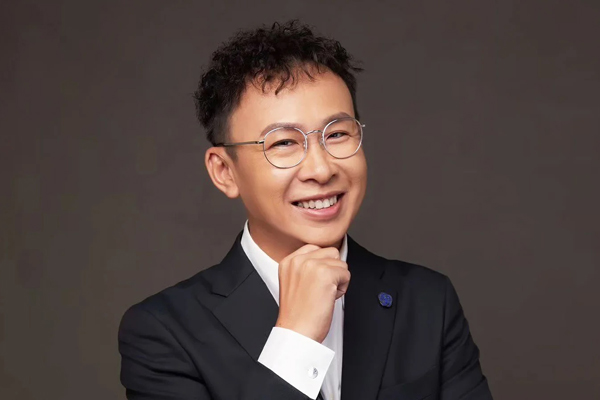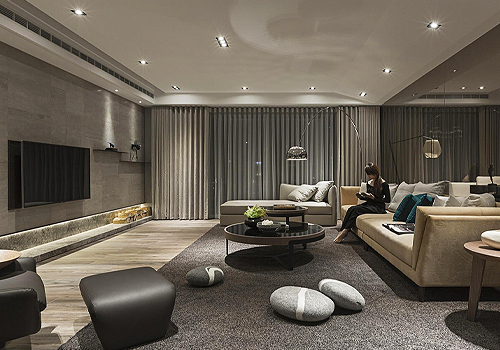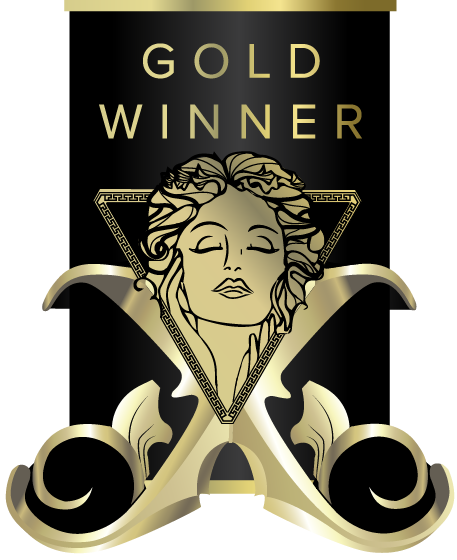
Interview
Jung Chih Hsu
1 Congratulations on winning the MUSE Design Awards! Can you introduce yourself and share about what inspired you to pursue design as a career?
Thank you! I am the founder of Ten Art Deco (十藝設計), a design firm established over 15 years ago. My background is in spatial design, and my passion for art, sketching, and aesthetics inspired me to create this company. In the early years, we primarily focused on residential interior design, but as the company grew, we expanded into large-scale residential planning and self-built housing projects. More recently, we established a construction company, allowing us to provide more comprehensive services, including the design of public spaces and amenities for large-scale construction projects. Our core design philosophy is to maximize space efficiency without waste while integrating art and culture into every corner of a space. Additionally, we emphasize aesthetics alongside long-term maintenance and cleanliness, ensuring that our designs are both beautiful and practical. Winning the MUSE Design Awards is an incredible honor that reaffirms our commitment to creating thoughtful, well-designed spaces that enhance people’s daily lives.
2 What does being recognized in the MUSE Design Awards mean to you?
Winning the MUSE Design Awards is an incredible honor for Ten Art Deco. It is not only a recognition of our years of dedication to design but also a strong encouragement, affirming that our design philosophy and values are appreciated on an international level. We have always emphasized efficient space utilization, ensuring that no area is wasted, while also integrating art and cultural elements into every corner of our designs. This award validates our belief that great design should be both functional and emotionally impactful, creating spaces that enhance daily life. Moreover, this recognition gives our team greater confidence to continue refining our work. Moving forward, we remain committed to delivering innovative residential, public, and architectural designs, ensuring that aesthetics and practicality go hand in hand to make beautiful and meaningful spaces a part of everyday life.
3 How has this achievement impacted your career, team, or agency, and what opportunities has it brought so far?
Winning the MUSE Design Awards has had a significant impact on both my professional journey and our company, Ten Art Deco. It has not only strengthened our credibility in the industry but also opened up new opportunities for collaboration with larger developers and international clients. For our team, this recognition serves as motivation to push our creative boundaries even further. It has attracted more clients who appreciate our approach to efficient space utilization, artistic integration, and practical aesthetics, allowing us to work on more ambitious projects. Additionally, this achievement has given us greater visibility in the design community, leading to invitations for industry talks, exhibitions, and potential partnerships. It reinforces our commitment to innovation and inspires us to continue creating designs that blend beauty, function, and long-term sustainability.
4 What role does experimentation play in your creative process? Can you share an example?
Experimentation is at the very heart of our design process at Ten Art Deco. It drives us to push boundaries and explore unconventional solutions that ultimately lead to more innovative and functional spaces. For instance, in one of our large-scale residential planning projects, we embraced an experimental approach by integrating modular design elements and adaptive lighting systems. We experimented with flexible partitions that allowed spaces to transform according to the needs of the inhabitants. This not only enhanced the functionality of the living areas but also introduced a dynamic aesthetic element to the overall design. The project was met with enthusiastic feedback, reaffirming our belief that taking creative risks and experimenting with new concepts can lead to groundbreaking results in design.
5 What's the most unusual source of inspiration you've ever drawn from for a project?
Yes, my latest inspirations come from a blend of sustainable design practices, biophilic elements, and innovative technological integrations. Recently, I’ve been fascinated by how nature and modern technology intersect to create dynamic, adaptive spaces. For example, I’ve been exploring ways to incorporate organic forms and eco-friendly materials into my projects, which not only enhance visual appeal but also improve environmental performance. In one recent project, I experimented with a dynamic façade system that responds to natural light and changing weather conditions, ensuring that the building remains both energy-efficient and aesthetically engaging throughout the day. This approach allowed me to create a space that adapts to its environment while maintaining a harmonious balance between form and function. By continually drawing on these cutting-edge inspirations, I strive to push the boundaries of traditional design and deliver innovative, sustainable, and beautiful environments.
6 What’s one thing you wish more people understood about the design process?
I believe the most overlooked yet essential part of the design process is the iterative journey of ideation and experimentation. While the final design often gets the spotlight, it’s the extensive behind-the-scenes work—research, brainstorming, prototyping, and multiple rounds of refinement—that truly brings a concept to life. This phase involves embracing trial and error, learning from failures, and constantly challenging conventional boundaries. I want people to see that innovation in design is not just about the finished product, but about the creative process and the continuous pursuit of improvement that transforms ideas into impactful, functional spaces.
7 How do you navigate the balance between meeting client expectations and staying true to your ideas?
Balancing client expectations with our own design philosophy is all about open communication and collaboration. I begin by deeply understanding the client’s needs and vision, then I weave in our commitment to efficient space utilization and artistic innovation. This dialogue ensures that the design not only meets functional requirements but also carries the aesthetic and sustainable values that define our work. Ultimately, it’s about finding common ground where practicality and creativity merge, allowing both the client’s desires and our philosophy to enhance the final outcome.
8 What were the challenges you faced while working on your award-winning design, and how did you overcome them?
Yes, there were several challenges along the way. One major difficulty was integrating innovative design elements while maintaining practicality and meeting the client’s functional requirements. For example, balancing the aesthetic vision with the structural and environmental constraints sometimes led to unexpected hurdles.
9 How do you recharge your creativity when you hit a creative block?
When I hit a design bottleneck, I find that stepping back is essential. I take a moment to reassess the challenge—sometimes even engaging in activities outside the immediate project like a walk in nature, visiting art exhibitions, or simply sketching freely without constraints. This change of pace often allows new ideas to emerge. Additionally, I value collaboration; discussing the issue with colleagues or mentors provides fresh perspectives and creative solutions that I might not have considered alone. This combination of introspection and collaborative brainstorming helps me overcome obstacles and re-energizes my creative process.
10 What personal values or experiences do you infuse into your designs?
I view design as a deeply personal expression of both creativity and values. My background in spatial design, combined with a lifelong passion for art and aesthetics, has shaped a philosophy that prioritizes sustainability, efficiency, and cultural integration. For example, I incorporate eco-friendly materials and smart spatial planning in every project, reflecting my commitment to sustainability and responsible design. Additionally, I draw inspiration from my own experiences—whether it’s the beauty of nature encountered during a quiet walk or the influence of diverse cultural elements I’ve absorbed over the years. These experiences inform my choice of materials, color palettes, and the way I organize spaces, ensuring that every project is not only functional and visually appealing but also resonates with a sense of human touch and authenticity. Ultimately, by blending these personal insights with the practical needs of each project, I strive to create environments that are both meaningful and transformative for those who experience them.
11 What is an advice that you would you give to aspiring designers aiming for success?
My advice for young designers is to remain curious and persistent. Always strive to learn and explore new techniques, trends, and technologies while also honing your unique aesthetic and vision. Embrace experimentation and don’t be afraid of failure—each setback is an opportunity to refine your skills and ideas. It’s also essential to stay open to collaboration and feedback; working with diverse teams can spark innovative solutions and broaden your perspective. Remember to remain true to your personal values and style, as authenticity is what ultimately sets you apart. Finally, be patient with your progress—the path to success in design is a continuous journey of growth and adaptation.
12 If you could collaborate with any designer, past or present, who would it be and why?
If I had the opportunity to collaborate with any designer, I would choose Frank Lloyd Wright. His revolutionary approach to organic architecture—where structures are seamlessly integrated with their natural surroundings—has always inspired me. Wright’s visionary work emphasized a harmony between design, nature, and functionality, a philosophy that resonates deeply with my own focus on efficient space utilization and the infusion of art into every corner. Collaborating with him would not only be an extraordinary learning experience but also a chance to explore innovative design solutions that honor both tradition and forward-thinking practices.
13 What's one question you wish people would ask you about your work, and what's your answer?
Yes, one important question that often goes unasked is: “What is your vision for the future of design?” My answer to that would be: I believe the future of design lies in creating spaces that are not only aesthetically pleasing but also deeply responsive to our evolving needs—both environmentally and socially. As technology advances, I envision a design landscape where sustainable practices, smart integration, and human-centric approaches converge. This means designing for inclusivity, accessibility, and resilience, ensuring that every space contributes to a healthier, more connected world. By embracing new materials, innovative techniques, and adaptive methodologies, I see design as a powerful tool to improve quality of life and address the challenges of our times.

